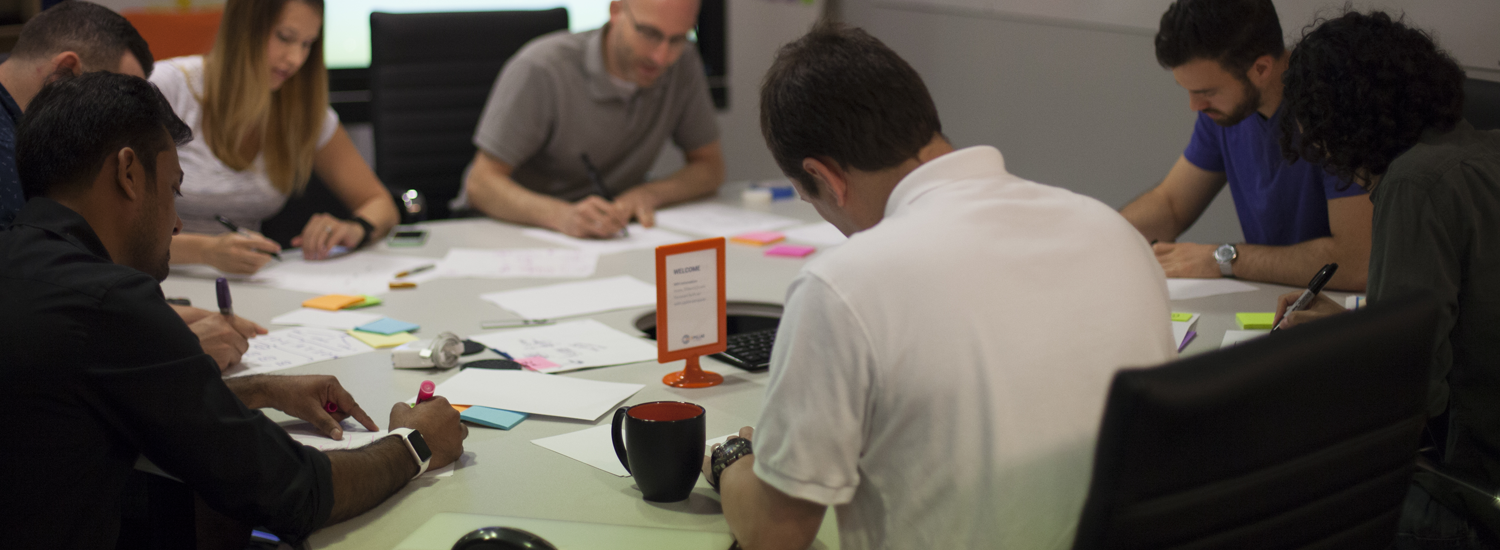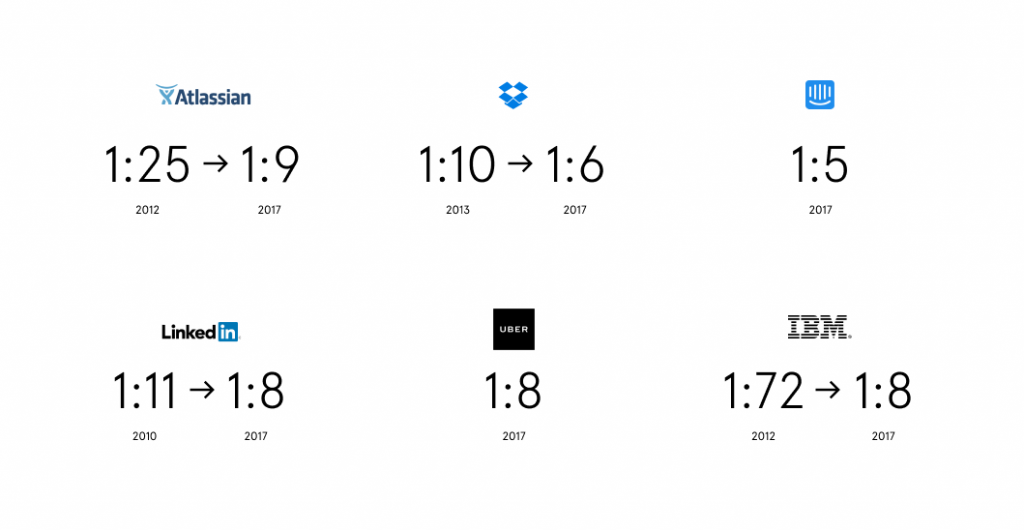
What Does the Ideal UX Team Look Like?
Last week, the head of product for a small company asked me what the right size, skills, and make-up was for his UX team.
Across the industry we’ve seen a trend toward smaller ratios of UX designers to engineers. My team serves about 30 clients with User Experience, and we typically run at ratios of 1:7 for designers to engineers and 1:10 for product managers to engineers. This ratio is sometimes smaller based on the client’s needs, timeline, and what has already been done. The graphic below comes from a TechCrunch article covering this trend at six well-known tech companies.

Don’t Build the Church for Easter Sunday
One of my great mentors used to always say: “Don’t build the church for Easter Sunday” – the idea being that you need to have capacity to cover your usual needs and let things get a bit crowded on those busy times. His phrase works as well for heads of UX as it does for engineers building something.
When I was a UX director, I was responsible for a platform supporting 60 sites and additional data products. There was no way I could get budget for and staff a team big enough for all the work I had to do. There were also skills I really needed some of the time, but it didn’t make sense to have on-board all of the time.
I had a core team, including research, interaction design, and visual design, and I supplemented with contractors who knew us and could jump in when needed. I also was always developing relationships with staffing agencies, design agencies, and potential employees. It gave me the flexibility and capacity to cover Easter Sunday, Christmas Eve, and all the days in between.
Keys for Building the Ideal User Experience Team
So what should a head of product or UX do?
- Build an actual team: A rockstar can’t get it all done alone.
- Build a deep bench: Develop relationships with people who understand you and you can put in when needed.
- Hire generalists, contract with specialists: Having some generalists who can do research, interaction design, and visual design will help you move quickly, have strong relationships within the company and have deep customer and product knowledge. Contract when you want heavy-duty information architecture, research, strategy, or visual design for a specific effort.
- Have good standards and practices: Having a consistent way of working makes it much easier to bring in others to help share the load. This includes your design system, tools, and how you do things like user recruiting and delivering to engineering.
- Get some juniors: A team full of seniors can be tricky because they cost a lot, they don’t collaborate too much, and they are likely to leave because you have no career path to offer them. Bringing on junior designers helps with all those things.
The ideal UX team is one that can flex and adapt. Getting there isn’t that hard if you know how to work it.
This post was originally published on Jessica Hall’s personal website, Hallway Studio.
Recent blog posts

Stay in Touch
Keep your competitive edge – subscribe to our newsletter for updates on emerging software engineering, data and AI, and cloud technology trends.



